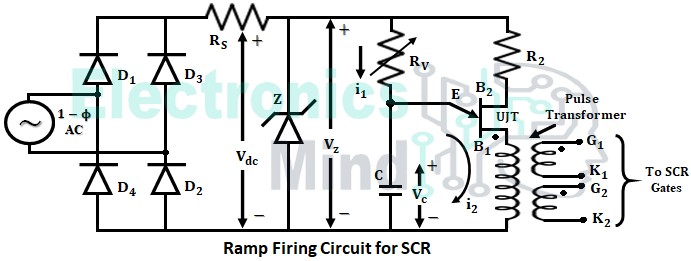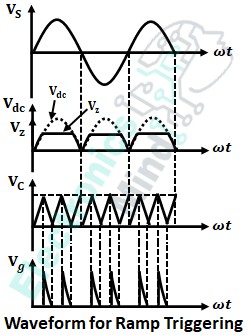The ramp firing circuit is also known as a synchronized UJT triggering circuit. The below shows the ramp circuit used for triggering SCR.
In the circuit diagram shown above, we have,- D1, D2, D3 and D4 = Diodes form full-wave bridge
- Z = Zenor diode
- Rv = Variable resistor
- VC = Voltage across capacitor
- Vz = Voltage across zener diode.
Single-phase 230 Volts is rectified into dc voltage with the help of a full-wave diode bridge. Resistance Rs steps down Vdc to a value that is desirable for Zener diode Z and UJT. This voltage Vdc is then clipped to a constant value with the help of the Zener diode, as Vz. Vz is given to the RC network and the capacitor starts charging through Rv. UJT is switched-ON when Vc reaches trigger voltage Vp of UJT.
After UJT is turned ON, the capacitor discharges through the emitter of UJT, the primary winding of the pulse transformer and current flows through it. Pulse voltage is generated at the secondary winding terminals of the pulse transformer because of the current i2. These pulses are given to SCR gates to trigger them. SCR turns-ON when it is forward biased. In this firing circuit, firing angle α can be controlled upto 150⁰.
As in this firing method, power can be controlled by varying Rv, this triggering is termed as manual control or open-loop control. If R is small, then Vc reaches Vp of UJT twice in every half-cycle as shown in the below waveform.


